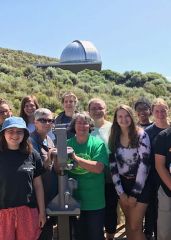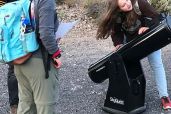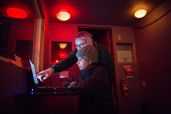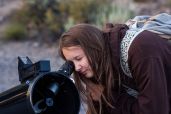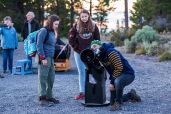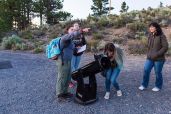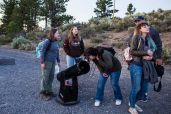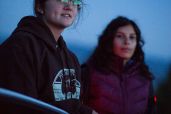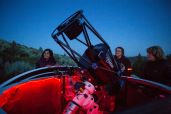Last year, Girl Scouts introduced space science badges, developed by the SETI Institute in partnership with GSUSA, for Daisies, Brownies, and Junior Girl Scouts. In just one year, more than 68,000 Girl Scouts have completed Space Science badges. This year, Girl Scouts released space science badges for older girls, Cadettes, Seniors, and Ambassadors.
The Girl Scout Astronomy Adventure Destination campers were the first to complete a Space Science Expert or Space Science Master badge at Pine Mountain Observatory (PMO), outside of Bend, Oregon. The University of Oregon observatory is home to extraordinary dark skies, with spectacular views of the Milky Way. Pamela Harman, Director of Education at the SETI Institute, facilitated hands-on astronomy activities for the Girl Scouts campers. Completing badge steps was complemented by projects that can be implemented by the girls in their outreach effort at their home councils. The girls learned to observe the night sky with three different instruments: Dobsonian telescopes, the 15-inch restored Fecker telescope, and the robotically-operated 14-inch telescope. Observatory staff, volunteers, and undergrad students helped the girls learn how to use the different telescopes.
Girl Scouts were the teachers during the public open house on Friday and Saturday nights. They pointed telescopes toward objects in the sky, delivered constellation tours, identified different types of stars, revealed stars with exoplanets, and gave tours of the remote-control telescope. Their expertise and skills enthralled the public. Girl-led, learning by doing, and cooperative learning - the processes of the Girl Scout Leadership Experience (GSLE) - are the foundation of the camp program. Also, per the GSLE, activities focused on discovery, connection, and action. The outcome is girls who lead with confidence, courage, and character to change the world. Watching them in action left no doubt that they had achieved their astronomy goals and gained confidence.
The camp program was a blend of space science activities, camp maintenance, hiking, completing the space science badges, and observing objects in the magnificently dark skies. PMO Director Dr. Scott Fisher collaborated with the Girl Scouts as they compiled their images into a stacked, color-adjusted image. U of OR physics undergrad students served as near-peers and served on a Q&A panel with amateur astronomers answering astronomy and STEM career questions.
The Destination is made possible by our NASA Sci Act Cooperative Agreement, GSUSA Travel and Outdoor Programs, the sponsoring council - Girl Scouts of Oregon and Southern Washington, extraordinary camp organizers and chaperones, and the University of Oregon’s PMO Director, Facility Manager, volunteers, and undergraduate students. The 2020 Destination will occur July 19 – 25.
“Reaching for the Stars: NASA Science for Girl Scouts” is supported by NASA Science under Cooperative Agreement No. NNX16AB90A.

